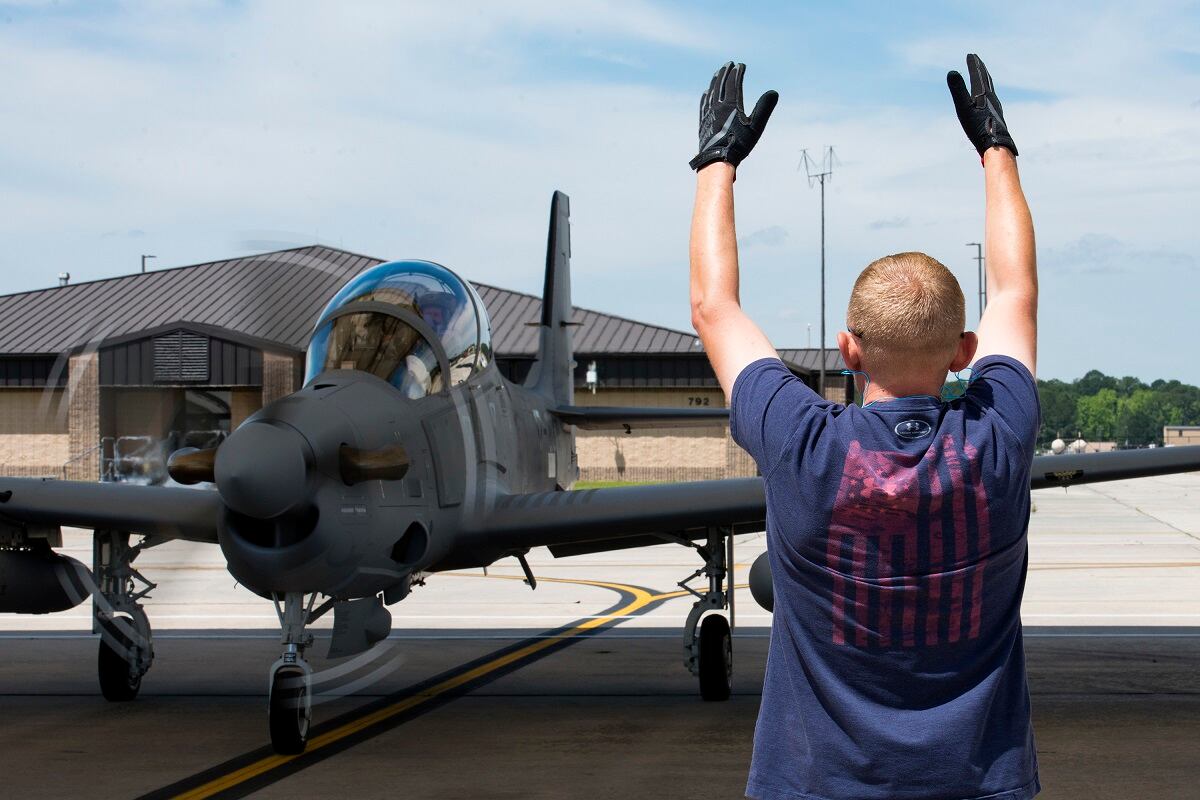WASHINGTON — The U.S. Air Force will not conclude the flying portion of its light-attack experiment after a June 22 aircraft crash resulted in the death of a pilot, a senior official announced Tuesday.
However, Lt. Gen. Arnold Bunch, the Air Force’s top uniformed acquisition official, stressed that the experiment is not over and that — should service leaders decide to move forward with a program of record — its acquisition wing will be ready to initiate a competition for a new plane by the end of this year.
The Air Force is “working multiple fronts so that we can put an RFP [request for proposals] out” by December, Bunch said. “So right now, we’re still progressing down that path. I’ve not pulled back on the throttle on any way, shape or form in that area right now.”
RELATED

Last month’s mishap involved the A-29 Super Tucano, made by Embraer and Sierrra Nevada Corp., that was being flown in a training mission over the Red Rio Bombing Range, which is part of the White Sands Missile Range north of Holloman Air Force Base in New Mexico.
Lt. Christopher Carey Short, a naval aviator, died in the accident while a second pilot was airlifted to the hospital with minor injuries.
“Anytime you lose an airman, you have to pause, and you have to pause and think a little bit,” Bunch told reporters.
“So the loss of Lt. Short is a critical setback for America, writ large. That is a big hit to all of us. Having said that, we were trying a different approach, we believe we’ve collected the data using the approach and I would see us using approaches similar to this in the future.”
In the wake of the crash, Air Force officials have stressed that the incident would not unduly impact the service’s deliberations about whether to procure a light-attack aircraft, which proponents argue would be able to conduct the counterterrorism mission in the Middle East at lower costs.
The cause of the A-29 mishap is under investigation by an safety investigation board, which will likely conclude its analysis within 30 days of the incident. However, the Air Force likely will not publicize the root cause of the crash until months later, when an accident investigation board report is released.
As the light-aircraft experiment continues, the service will take a “multi-pronged approach” that explores everything from the manpower and logistics tail needed to support a new light-attack plane, to possible basing options, Bunch said, and it will move forward with those efforts until directed otherwise.
It already gathered the flight test data it needs from the A-29 and its competitor, Textron’s AT-6 Wolverine, over the past month and through the first part of the experiment, held last summer, Bunch said. However, he could not immediately confirm what percentage of planned flights had been carried out.
To complete the experiment, the Air Force will gather further logistics and sustainment information from the contractors. It also plans to test a new exportable, commercial off-the-shelf network onboard surrogate aircraft to further prove out that capability.
“We got quite a bit of experimentation done in that area, we demonstrated that we could utilize it on those platforms,” he said. “Now what we’ll do is we’ll transition that onto some surrogate aircraft. We believe that is easily doable where we can collect the data off those and it will be applicable for what we’re trying to do with the light attack and coming up with an exportable network.”
The service will reschedule an event slated for July that would bring military officials from partner nations to Holloman AFB to observe the experiment.
More than 50 nations have been invited to that event, and Bunch expects that when it is rescheduled the U.S. Air Force will be able to share information about the results.
“Right now what we’re trying to pick is the right time and the right location,” he said.
Valerie Insinna is Defense News' air warfare reporter. She previously worked the Navy/congressional beats for Defense Daily, which followed almost three years as a staff writer for National Defense Magazine. Prior to that, she worked as an editorial assistant for the Tokyo Shimbun’s Washington bureau.






